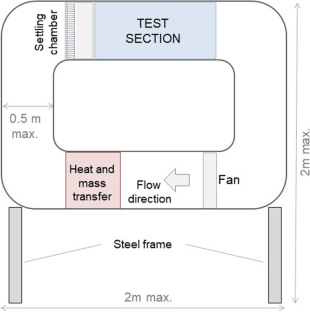Small-Scale Wind Tunnel for the Investigation of the Influence of Environmental Conditions on the Performance of Building Materials
Abstract
Climate significantly affects the performance of building materials and its changing patterns are posed to increasingly exacerbate the projected impacts. Prevention strategies are indeed necessary to ensure avoiding excessive degradation and serious damage to the built environment. In this context, innovative and accessible methodologies and tools are required to investigate and characterize the interaction between material properties and climatic factors. This paper presents an innovative device for the simulation of natural ventilation, relative humidity and temperature fluctuations and for evaluating the performance of building materials subjected to different environmental scenarios. The presented results include the design, construction and validation of a small-scale wind tunnel (2 m × 1.8 m ca. vertical orientation). Key findings outline the adequacy of the tool in reproducing a stable, quality airflow with the following characteristics: achievable operational airflow speed ranges between 0.2 and 0.7 m/s, safe operational temperature is included between 10℃ and 35℃ and allowable operational relative humidity varies between 30 and 99%. Advantages and limitations for laboratory applications are outlined in the paper and future work is also suggested.


 求助内容:
求助内容: 应助结果提醒方式:
应助结果提醒方式:


